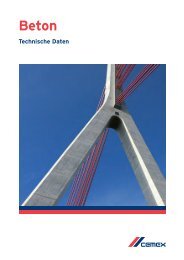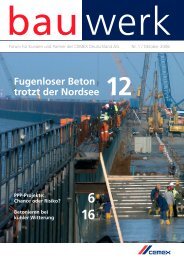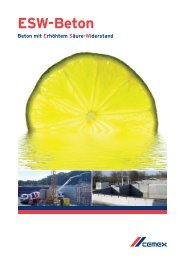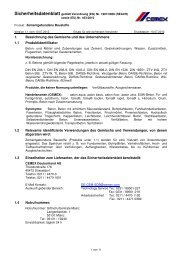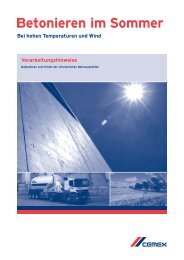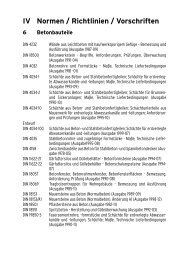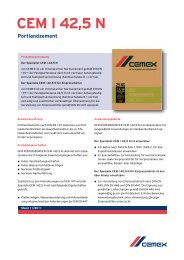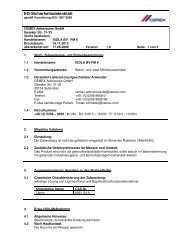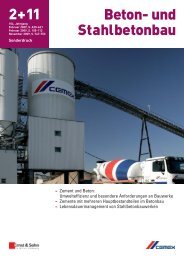building a better future - Cemex
building a better future - Cemex
building a better future - Cemex
Create successful ePaper yourself
Turn your PDF publications into a flip-book with our unique Google optimized e-Paper software.
long-term impacts of emissions<br />
reduction efforts<br />
In 1990 our clinker factor stood at 84 percent and no alternative<br />
fuels were used in our production processes. Since then,<br />
we have taken significant steps to reduce our CO2 emissions<br />
and overall environmental footprint. Clinker reduction and<br />
alternative fuel substitution have greatly reduced the direct<br />
emissions from our manufacturing processes, while projects<br />
such as our EURUS wind farm help to curb the indirect CO2 impacts<br />
associated with our power needs. Together, these efforts<br />
represent more than 7.5 million tons of avoided CO2 emissions<br />
compared with our 1990 baseline. That’s equal to offsetting<br />
the annual emissions of 1.3 million passenger vehicles, or saving<br />
nearly 16 million barrels of oil from being consumed.<br />
AVOIDED CO2 EMISSIONS<br />
VS. 1990 BASELINE<br />
thousand tons<br />
6,000<br />
4,000<br />
2,000<br />
2,199<br />
6,603 6,483<br />
05 09 10 11<br />
Through alternative fuel substitution<br />
Through clinker factor reduction<br />
7,072<br />
developing alternative energy sources<br />
Our EURUS wind farm in Oaxaca, Mexico, has the capacity to<br />
provide 25 percent of the energy needed to run our Mexican<br />
operations, and in 2011, allowed us to avoid 489,169 tons of<br />
CO2 emissions.<br />
We are exploring ways to further reduce our carbon footprint<br />
by using efficient process technologies and changing the way<br />
we source electricity. In 2011, for example, CEMEX Philippines<br />
launched a collaborative project with Sinoma Energy<br />
Conservation Ltd to devise a system for capturing waste heat<br />
from our kilns to produce clean, alternative electricity. At our<br />
Solid Cement plant in the island of Luzon, this technology is<br />
expected to yield 6 MW of onsite energy production each year,<br />
representing 27 percent of energy needs at the Solid plant and<br />
producing an annual cost savings of approximately 35 percent<br />
from grid rates.<br />
1990 2005 2009 2010 2011<br />
Lead in Sustainable Construction<br />
Clinker factor (%) 84.3 81.4 75.1 75.9 75.1<br />
Alternative fuels rate (%) 0.8 5.1 16.4 20.3 24.7<br />
Through these and other projects, CEMEX will continue to<br />
evaluate the feasibility of low-carbon and renewable energy<br />
solutions, including the possibility of wind and solar energy<br />
generation at many of our operations.<br />
Direct emissions<br />
CO2 emissions avoided from clinker factor<br />
(tons) – 1,943,054 5,472,510 4,909,144 5,316,862<br />
CO2 emissions avoided from alternative<br />
fuels factor (tons) – 256,468 1,130,068 1,574,212 1,755,724<br />
Total CO2 emissions avoided vs. business as<br />
usual 1990 baseline (tons) – 2,199,522 6,602,578 6,483,355 7,072,586<br />
Indirect emissions<br />
CO2 emissions avoided from Eurus Project in<br />
Mexico (tons)<br />
– – 149,760 440,939 489,169<br />
< previous 22 next>



